Earlier this year we asked which marque you most often recommend. We presume that, as car enthusiasts, friends and family will ask you about what car they should buy. But what about the cars they shouldn’t buy? What are the lemons, money pits, brands that normies think are cool but are actually lame? We want to hear which cars you warn people to stay far away from, and why.
Which marque would you never recommend?
The most entertaining comment by next week will receive a prize. Scroll down to see the winner of last week’s QotW, “Which JNC has the best-looking rear?“.
Like human butts, car rear ends come in all shapes and sizes. Your favorites ranged from Cristoph‘s svelte derrière of a Mazda Cosmo Sport to StreetSpirit‘s badonk of a Butaketsu Laurel. In between landed a slew of studied choices. Nigel went with the all-business backside of a Toyota X70, while TheJWT selected the boso bum of the Nissan Cherry X1-R. MWC went with the muscle car maximus of Celica Liftback, while daniel and Yewnos100 named every Mazda booty there is. Taylor C couldn’t settle on just one rump, naming the NSX, J30 Maxima, Z32, NA Miata, and SW20, and Peg Baldwin made a case for the keister on her own 1979 Corolla.
The winner this week was Tom Westmacott, whose ode to the Toyota 2000GT’s caboose is almost as much of a work of art as the car itself:
The Toyota 2000GT is the most beautiful JNC and the rear is its best aspect, so no contest really. The pre-aero styling saves it from the fat butt of newer cars like the A80, instead tapering down into an elegantly cut tail complete with crisp creases wrapping around from the side. Even the road car rocks a ‘racer’ look without bumpers, just a couple of vertical overriders framing the number plate. The lamp clusters are period-unique, grouped on silver backing, foretelling the “Altezza lights” that would be all the rage three decades hence. A slight three-quarter angle lets you enjoy the car’s elegantly organic flanks seeming to leap ahead down the road.
The lower rear is tucked under in the classic style, with a couple of neatly grouped exhausts sticking out Italian style, and if you get low enough you’ll see the long lower wishbones almost meeting in the centre, revealing the thoroughbred chassis that so endeared it to real drivers such as Carrol Shelby.
Omedetou, your comment has earned you a set of decals from the JNC Shop!



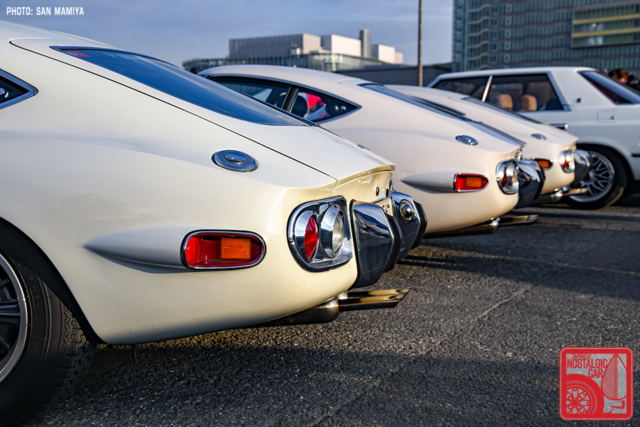
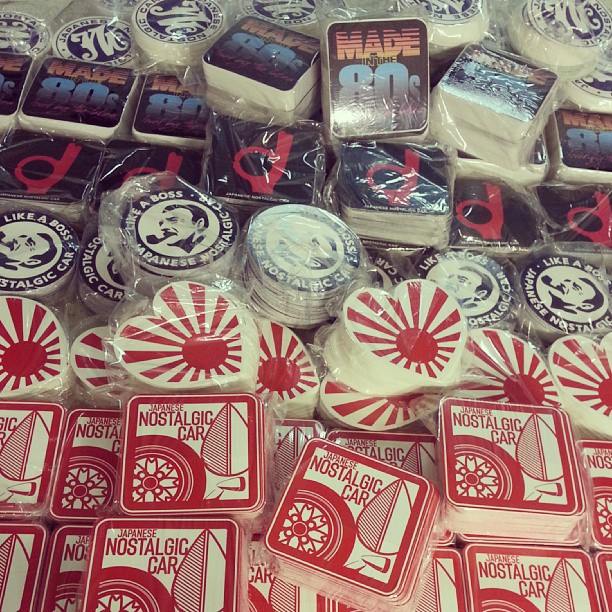
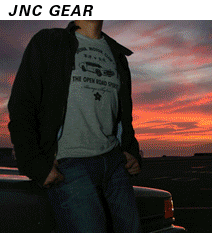
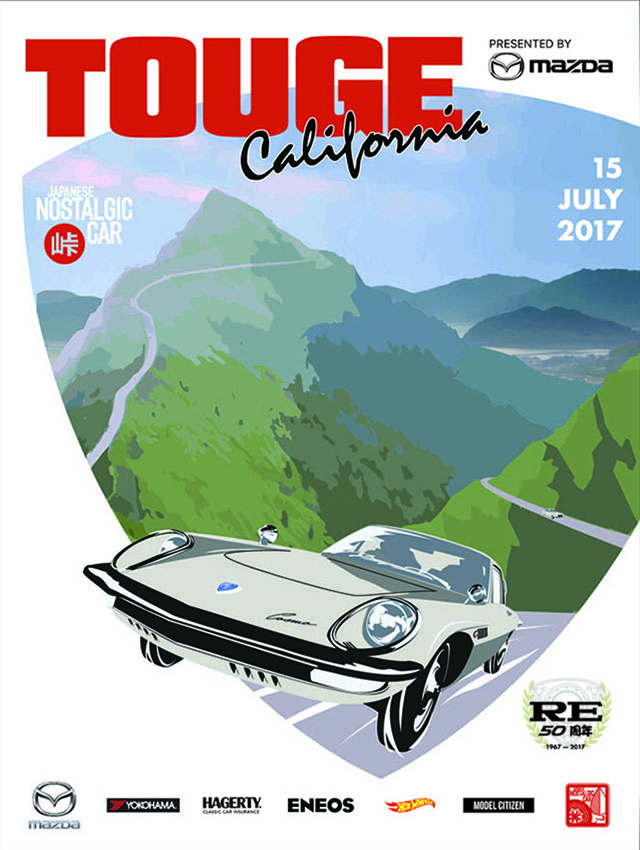
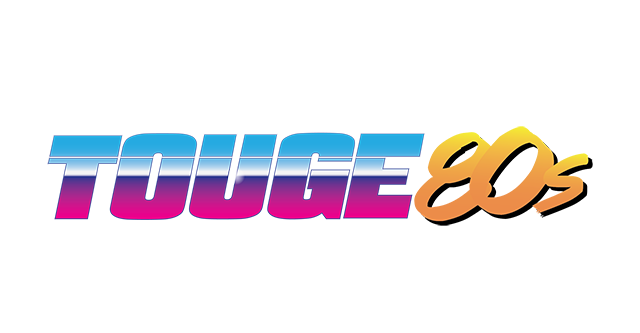
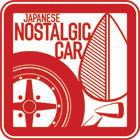
I think that in another end of the world (Argentina) the answer is the Peugeot/Citroen combo. In the last few years of being an aspirational and prestigious or innovative brand they had, at least, more than a decade of bad engines with little reliability (THPum and Pudre-Tech for the initiated) in addition to a quality of components that left something to be desired. . Gone are the eras of Pininfarina designs or the disruptive and advanced. Today we see a loss of identity and a need for survival. Don’t get me wrong, a Peugeot will always have a different ride, but the reliability and maintenance will not match the proposal.
Any post 90’s VAG or Tesla appliance.
I’ve had reliable Pontiacs, troublesome Hondas and Volvos, my current Jeep is treating me very kindly and i was raised in a family of Alfa Romeo drivers that had carefree driving most of the time so personal experience is not that good of a measure but if anything I recommend people to get a fun car first and foremost.
get a car that makes you an enthousiast!
If I were to pick a Japanese marque I would have to say Mitsubishi. Almost everyone I know who owned one had drivability issues. My personnel experience is that every time I got into one as rental cart or a friends, I always felt like the engineers stopped working a noon and said its good to go. Back in the 90s Mitsubishi was near the top of its game, but like a successful sports team with new owners focused on profit, they slowly killed off all their exciting products until eventually they left the US market, although they are now back with some very unimpressive SUVs.
Lead photo is deceiving though, ’80s Mitsubishi was as good as anything. I had an ’87 Colt hatchback in the mid-90s and it was the best car I’d had to that point.
My Brother had a Sapporo from that era and he traded it in after one year of ownership. At the time I asked him why and his response was: “It was the worst car I ever owned for reliability. It was in the shop for engine and transmission related issues so often, I think I drove a loner car more than the Sapporo.”
I’d like to answer based on two categories because this is a fanboy site for J-tin. Mitsubishi has emulated Chrysler from beginning to end. During the 60’s Chrysler had the reputation of any luxury German coupe, specifically the Chrysler 300 B thru J. Seems fitting they partnered with Mopar and they killed Mitsu too in the process. Most European makes…you couldn’t hand me the keys to any one of them because of their “ultimate German engineering” so long as you NEVER STRAY FROM THE SCHEDULED MAINTENANCE. This is why most new German stuff you see on the road is brand new cuz the driver is leasing it. If any maintenance light or maintenance statement shows up, including oil changes, dump it and lease another one before it chips one of your manicured fingernails, man or woman.
Another one for the spam filters, I’m getting good at this!
For us, it is any GREEN car … no matter what the marque, the one’s we have had were some shade of GREEN! We had 2 (which, I presumed were illegal but, then, what do i know) repos of both our ’99 Hyundai Elantra wagon and, our Jeep Liberty. Both were taken when we had a financial problem which, had occurred quite a few years ago. As this problem no longer exists (otherwise, how could we now have a Yellow Mercedes-Benz and a BLUE NIssan S-Cargo?). Nevertheless, not only do we not finance with usurious financers (Mercedes-Benz Financial likes us!) but, never again will I get another GREEN car (even though BRG/saddle is my fovire combo)!
After their decades long test cheating scandal, I wouldn’t buy a Daihatsu if anything, out of principle. I love some of their models but nope.
Oh dear, I have a hard time limiting to just one. So i’ll break it into the 3 major markets for what i have seen and dealt with professionally.
When it comes to the Japanese market, I have to go with Nissan. For decades, they have been plagues with some major failure in their manufacturing process that doesn’t speak to longevity. Sadly, the late 80’s / early 90’s, the Skyline, whether with a GTST or GTR, rust, inside and out. For being the top tier to their level of performance, the sheet metal and corrosion protection was just not what the JDM counterparts were. It does not last. Then you fast forward to the 2000’s to current, that anything with a CVT is just destined for failure from the factory.
When it comes to Europe, German engineering is just one i still can not get behind. Albeit, Porsche and BMW are superior in building performance road cars that handle incredibly well. But Volkswagen is the one i will never promote. Overpriced parts, over-engineered heeps of nuts and bolts. It would be one thing, that if a known failure in one generation vehicle was fixed for the next generation, but they are not. Like the high pressure pump lobe failures. The parts are not cheap!
And for the US market, Chrysler is a known throw-away brand, so it almost speaks for itself. However, Ford takes the cake for me. Between their cars and trucks, they have continuous issues and service bulletins and recalls are pretty frequent. Though the Mustang and anything 5.0, is pretty robust, it just seems that everything else in their lineup doesn’t get the care of the latter. Even with the Powerstroke, it really seems to continue to goes backwards in design. I really think the 7.3 powerstoke was the only thing they ever built, that would even run on moose piss if you needed it to. Otherwise, it all seems to be about marketing for them…
Tesla. Overcomplicated, high battery replacement costs and more electronic Bull**** than an F18 Fighter jet. Overpriced, fragile and no chance at DIY repairs for the layman.
The question is which “marque” would you never recommend?
Many “marques”, from time to time, produce a horror car, but they also produce other cars which are better ,and, within an acceptable range of opinion, good cars, and producing a mega-lemon occasionally isn’t usually sufficient reason to avoid the whole brand rather than one particular model.
So, logically, the question must be what manufacturer consistently produces cars that are sufficiently bad to result in a recommendation boycott, which is a toughie.
If we go back in time, there are many contenders; Lada, British Leyland, Trabant, or indeed almost any eastern block manufacturer spring to mind. There was a time when the infamous Lucas electronics fitted to many cars manufactured in the UK was reason enough to stay well clear and certainly warn the less-informed about the travails in store for them if they nevertheless forged ahead. There was many a buyer seduced by the svelte lines of Jaguars in a range of models who learned the hard way.
If we are talking today, then the question requires a different answer, and there are probably fewer contenders, but the winner is almost certainly a Chinese manufacturer. If you peek under that particular, blanket horror stories abound, mostly concerning EVs. Freely available press reports state that the MG ZS EV has a penchant for kidnapping its helpless drivers and passengers after catastrophic malfunctions cause them become runaways on the freeway or motorway (depending on which side of the pond you sit), and BYD is an endless source of horror stories about battery failures and consequent scary moments, and a distinct lack support available to the poor owners. The more you look the more awful stories are to be found. I am spoilt for choice, but if choose I must then, my answer; MG. Self-driving is a capability of debatable value, but on demand is the key, and the choice being made for you by the car is a deal-breaker. Just say’n!
This week’s question is a real head-scratcher, as while there are many poor cars out there, it’s very hard to identify a brand which has only ever made clunkers. Certainly even the lesser Japanese brands have at least one star in their portfolio, remembering cars like the Isuzu Bellett and 117, Daihatsu Sirion and Charade, or Suzuki Swift and Cappuccino.
For example, consider Audi. Almost every Audi out there is just a VW, Seat or Skoda with a superficial layer of prestige layered on, and a hefty vanity tax on the price, sold to shallow, status-obsessed people whose only interest in cars is in how they can inflate their ego. Audi’s vaunted “quattro” performance models conceal a dirty secret – the entire engine lies ahead of the front wheels. The comparison with Subaru is instructive, as they share the same basic layout however the Japanese aero-engineers at Fuji Heavy worked in harmony with physics, installing one of the shortest known engine layouts, the flat four. Meanwhile Audi engineers saw physics as an enemy to be bullied and dominated with sheer power, leading to absurdities such as an inline five, a V10, and the piece de resistance, the W12 engine all cantilevered out ahead of the front wheels. The faster your Audi is in a straight line, the less willing it is to turn corners, a situation that could be described as a vicious circle but for the fact that the reality looks more like a vicious straight line, when the overworked front tyres inevitably surrender mid-corner.
So I’d never recommend an Audi, right? Wrong. For there is one Audi which has its considerable engine well within the wheelbase, and which far from being an overpriced Skoda, is in fact a Lamborghini with the narcissism tax deducted. I refer of course to the R8, which comes with a delectable naturally aspirated mid-mounted engine and an open-gated manual box. It’s cheap, rustproof, and represents an era when the Japanese manufacturers were sadly off the boil after the Bubble burst. My friend has one and loves it. So not Audi then.
You see the problem – how to find a brand which has never made a single car of merit? One approach is to consider categories of cars I’d never recommend to anyone, and here the “luxury off-roader” leaps to mind. Of course, a luxury car needs lightweight suspension for low unsprung weight, an elegantly refined profile and easy-rolling tyres for a super-quiet cruise, and a low centre of gravity to keep the body well controlled without stiff suspension or lateral head-shake. All these dynamic properties the off-roader craps on from a great height. (The “performance luxury off-roader” takes it to the next level of paradox, all three properties being in irresolvable conflict).
So the brand which only makes these paradoxical vehicles, Range Rover, is the one I’d never recommend. In addition to being bad at everything, Range Rovers add incredible levels of unreliability ranging from the comedic (the Morris Marina doorhandle coming off in your hand) to the catastrophic (the crank snapping), with almost all Range Rovers offering a variety of ways for their service life to come to an abrupt end inconveniently mid-journey. They’re also bad for the environment, costly to fuel, hard to park, and ruinous to insure – although at least when yours is inevitably taken off your hands, you can take the insurance pay-out and go buy something sensible like a Land Cruiser.
I would not recommend any Marque that has too much to do with technology, I am looking at BMW. Tech is good but if your cant sustain your products due to glitches and over usage which makes things complicated will not be the right way to go. Having to have a BMW account to unlock most things your car has and without which you are locked out of 50% of the features is not the right way to go.
A marque I can’t recommend to anyone in its current state is Jeep.
A brand known for its war history and off roader vehicles is now almost a shell of its glory days.
Only two models in their lineup look off-road capable and might actually be able to offroad once you fix them up. These of course being the Gladiator and the Wrangler.
All the others: Cherokee, Renegade (both of these ended production in 2023, I didn’t know that ’til now), Compass, Grand Cherokee, Grand Cherokee L, Wagoneer, Wagoneer S, none of these give an offroader vibe or look like an offroader.
The Grand Cherokees and the Wagoneers are straight-up luxury SUV’s. Though, I argue there’s nothing “Sporty” and not a lot of “Utility” about these “Sport Utility Vehicles”, in spite of the Wagoneer coming with the 392 Hemi in earlier models or the 3.0TT I6 Hurricane motor in the recent years.
Speaking of which, the 3.0 Hurricane is a motor wound too tight. The tolerances are too finicky. Example: the plastic airbox. It’s inevitable that the thread on the screw eyelets will strip out eventually, and the little bit of additional air that gets sucked through whatever sliver of a gap in between the box lid and the filter makes the engine not run right, and will throw a code and a C.E.L.
The 2.0 Turbo in the Hybrids, the Wranglers, and the Compasses has a direct injection system that sounds like rod knock from the factory.
The old 2.4 Multiair engine had horrible oil burning issues at first, they were burning about 1 quart every 2,000 miles. They finally got a hold on that problem with some recalls a couples of years ago. I’m still leery of them, though.
In my opinion, the Wagoneers should’ve been put under the Chrysler badge, as Chrysler leans more toward the luxury end of the market (even if on the lower end of that market), but no, they put them under the Jeep brand.
With the Wagoneers being 80-100 grand plus and the size of a small blimp, I can’t think of anybody trying to take that thing down a dirt road, let alone off road.
The same can be said to a lesser degree with the Grand Cherokees and L’s. Too fancy, too big, and not viable for an offroad build.
The Compasses, Cherokees, and Renegades are all townie runabouts/ Mom’s car kinda feeling cars, and with mainly MacPherson type suspension, not much you can do for lifting them for better offroad use. Don’t let the “Trailhawk” trim fool you, it’s a badge and belly pan package. Closest thing to trail riding those are doing are the dirt road to your house (if you live down a dirt road). Which is sad, because Cherokees used to be another great offroading option, and Renegade was from the old CJ days.
Also, avoid the Hybrids. They’ve had some electrical gremlins that won’t let the car start with either motor. And Chrysler’s issued a warning that they may spontaneously combust, so they say don’t park it inside.
So, on top of having an identity crisis for the past 10 years or so, reliability problems with their electrics and drivetrain, and recalls that came in before we even had some of the cars, I can’t recommend this brand to anybody.
Oh wait!!!! Not limited to Japanese marques? Absolutely TESLA!!!!!! Everything from build quality to ethics & anything in between. I drive by a dealer prep facility all the time. Good lord. There is literally a mountain of parts replaced before the customer takes delivery!
I am surprised to see this carmaker only mentionned in previous comments, with one of its limbs nominated, but not the whole tree nominated? It is one of the worst in in terms of quality and reliability, and one that had much to do with captive imports, but in the wrong way…
Chrysler!
They always have been the weird one of the domestic Big Three, skating on financial thin ice, then mic-dropping the next big thing, then going back to figure-skating on this iced lake, near that part that becomes the fast-flowing river where the ice thins up…
The story that comes to my mind is this one, since it was what was happening as I grew up and got interested in cars.
Early 80’s. The world wanted smaller cars, and FWD is considered the new tech to have for smaller and safer cars. Chrysler came up with the K-cars, all was amazing! The minivan! Amazing! Then they kept doing the same old, same old. Eventually, their lineup for the average car buyer that was cutting edge in the mid-80’s, was the same lineup in the early 90’s but targeted to folks that wanted old fashion, american cars.
Mitsubishi made good and honest vehicles, and gladly sold their Colt under the Dodge name, and the early-90’s Colt coupé was a great little car, well balanced and really good looking, with japanese reliability. But Chrysler cannot deal with this, no, they have to come up with an indigenous design to replace their aging K-car and… not replace their captive-import, but at least offer something more ‘murrican. Here comes the Neon. Great looking, lightweight, fast, a good drive, cheap, a real good compact car! BAM! The next big thing! But its reliability was shit.
There are always two sides to every coin. Every time Chrysler comes up with a 25¢ of something new, interesting, great, the other side of the coin is silver-dollar sized and made of sadness, regrets and spendings.
I am sure there are other stories, maybe from other times, maybe from the same time, but for different cars, like the whole Eagle lineup that had nice cars but lacking dealership support, their minivan VS chrysler’s minivan, but I am not well versed in those.
I had family and good friends that drove Dodge, Jeep, and Chrysler vehicles in the past. One should not have to change an headgasket every two years. One should not consider a manual transmission “a wear item”. One should not consider an automatic transmission “a wear item” either, but hey, it’s a Chrysler…
There are absolutely no occasion that I would recommend anyone, even my worst enemy, to buy their product. The closer I ever got to a recommendation was “get a used leased one for cheap, use it for a year or maybe two and then sell it before Hell opens wide up”. For a carmaker offering cars for everyone and every purse, this is bad.